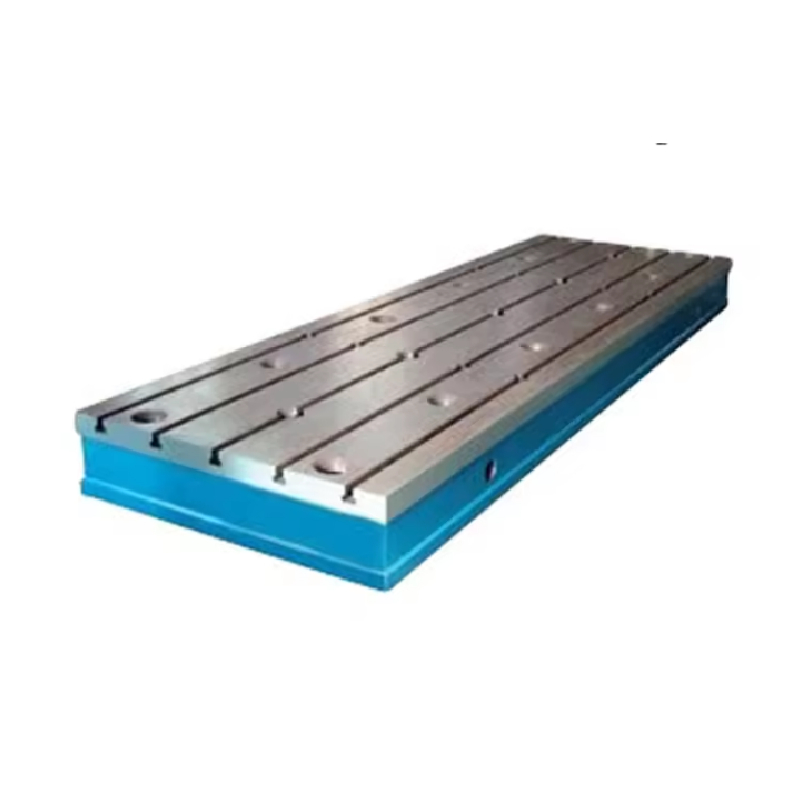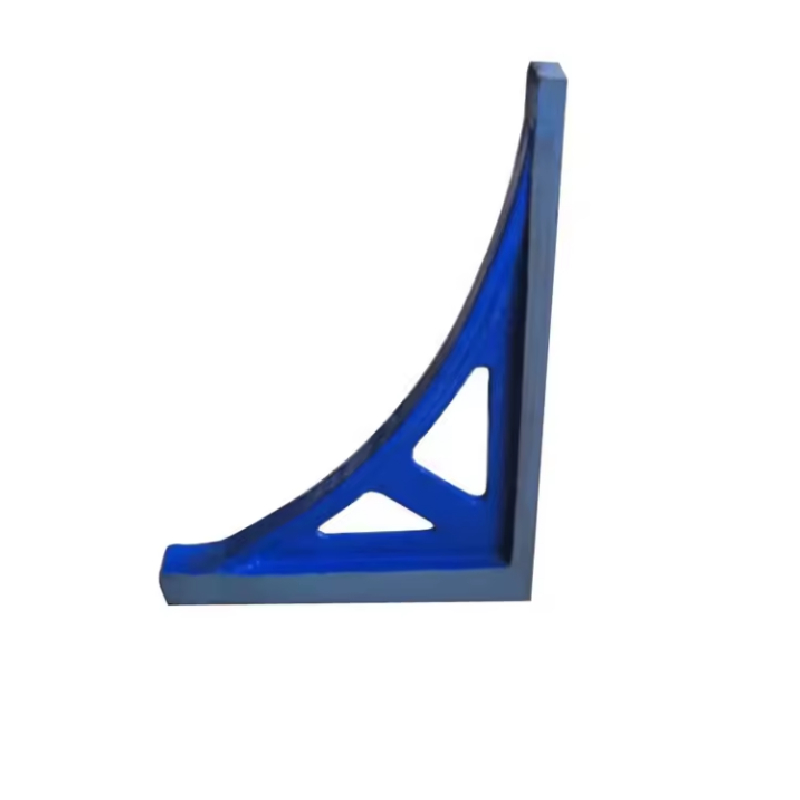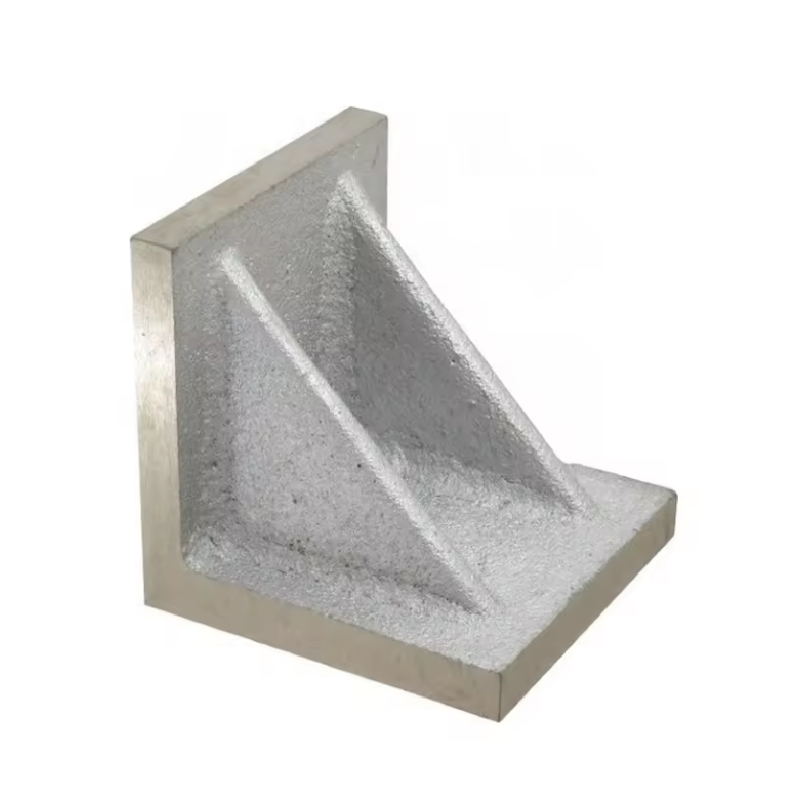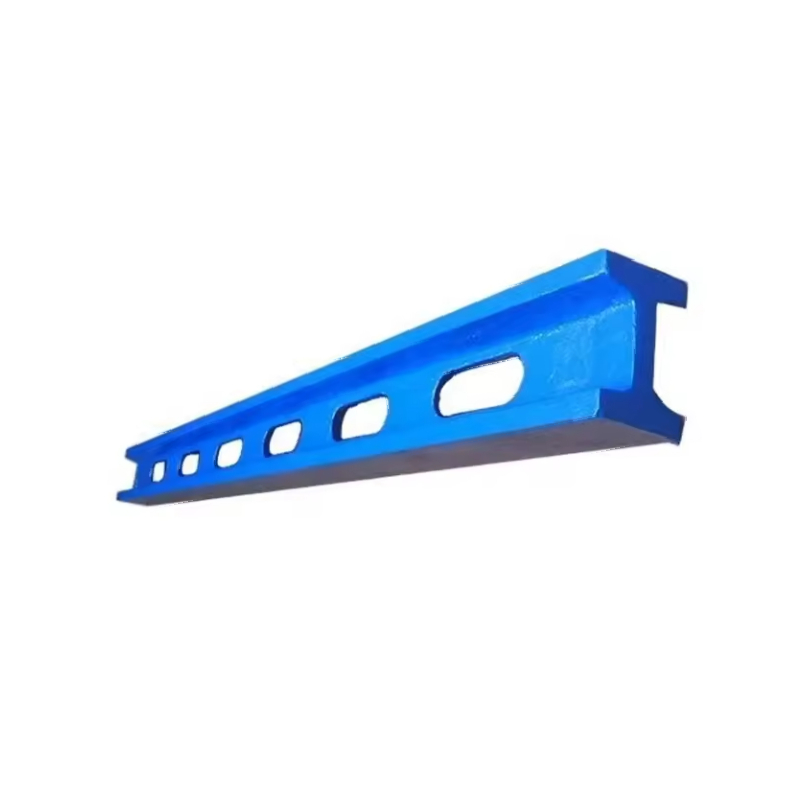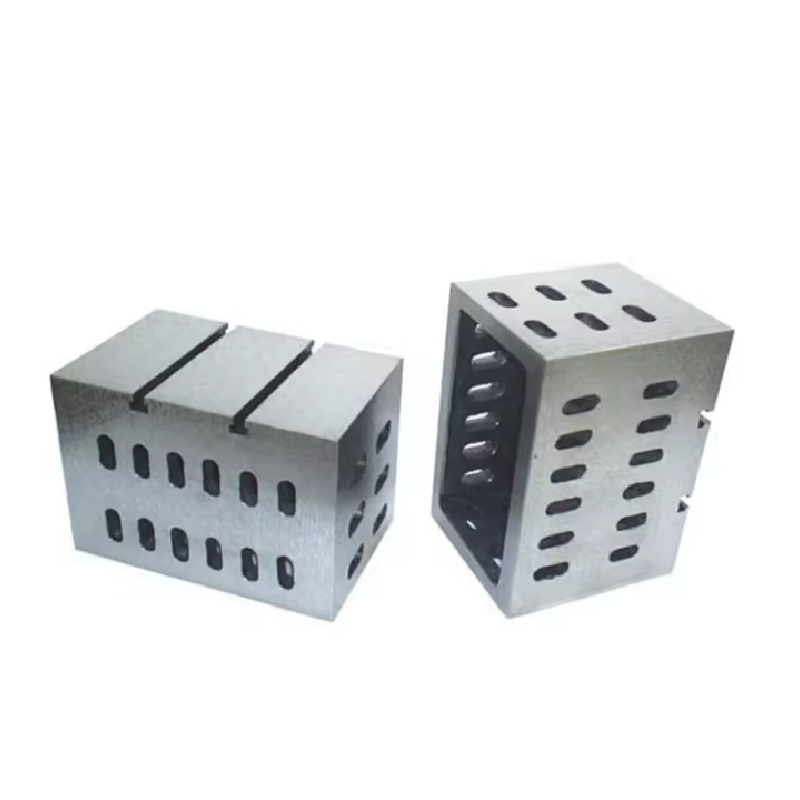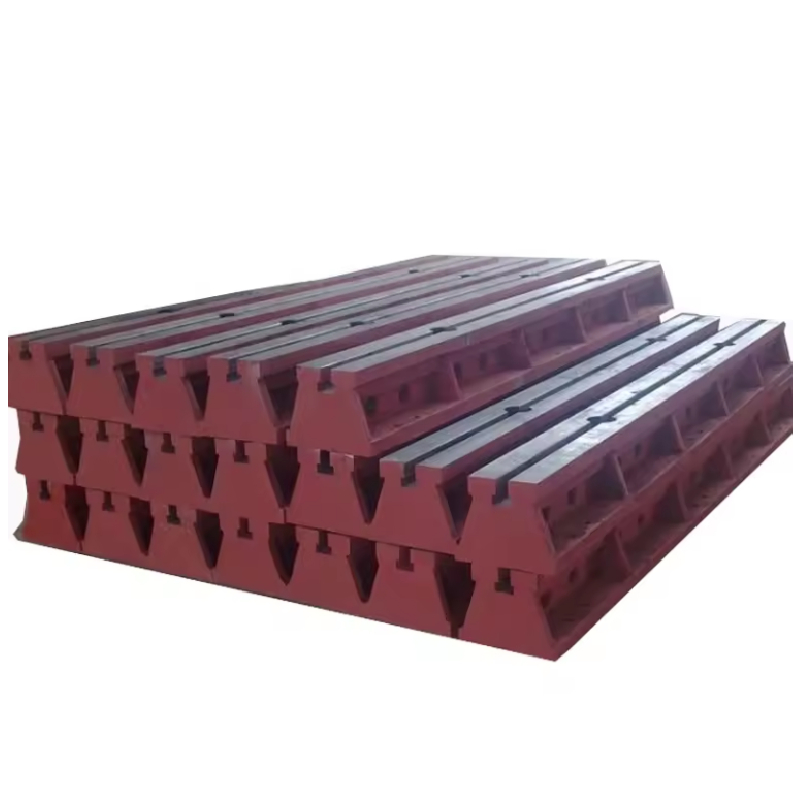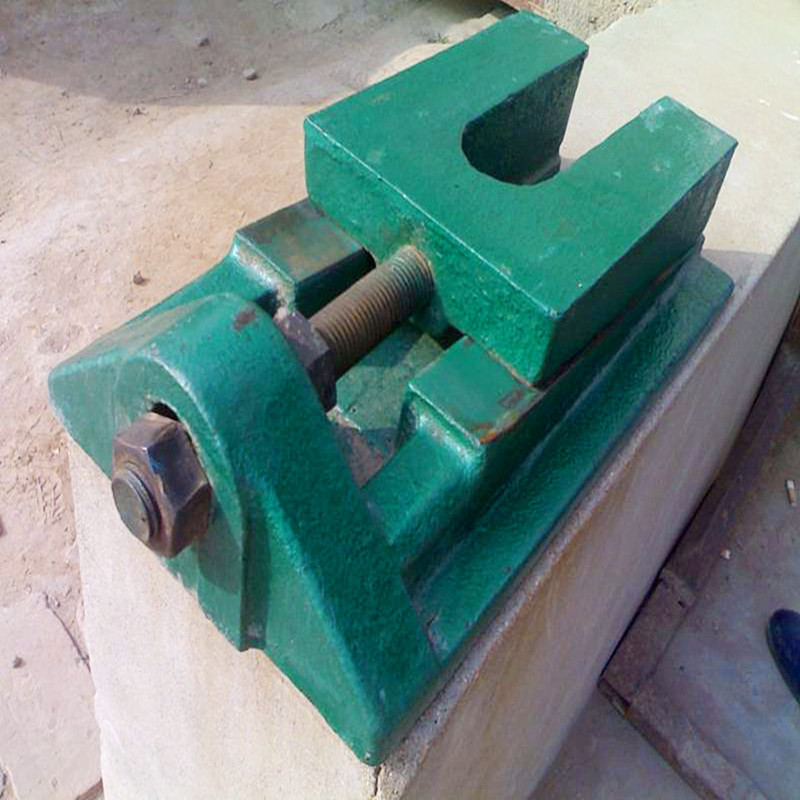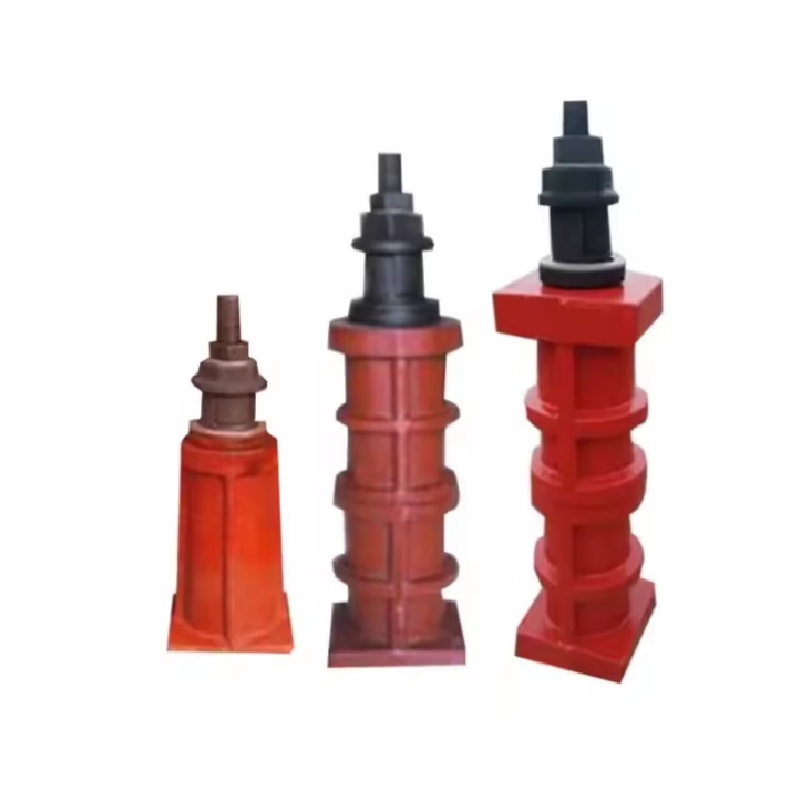ఆగ . 23, 2025 00:40 Back to list
Pad Iron Vibration Damping Pads for Heavy Machinery
The Critical Role of Advanced Industrial Damping Solutions
In the intricate landscape of modern industrial operations, the stability and longevity of heavy machinery are paramount. Vibrations, often an overlooked byproduct of high-speed rotation and powerful reciprocating movements, pose significant threats to equipment integrity, operational efficiency, and workplace safety. Addressing these challenges requires sophisticated engineering solutions, chief among which is the deployment of high-performance damping components.
One such foundational component is the pad iron. This essential element serves as a critical interface for absorbing and dissipating kinetic energy, thereby safeguarding delicate internal mechanisms, reducing noise pollution, and extending the service life of industrial assets. Its strategic implementation is not merely a matter of compliance but a proactive investment in enhanced productivity and reduced operational overhead. This article delves into the technical intricacies, application versatility, and strategic advantages of this vital industrial component, offering a comprehensive guide for B2B decision-makers and engineering professionals.
Manufacturing Process and Material Science of Pad Iron
The production of high-quality pad iron is a meticulously controlled multi-stage process, integrating advanced material science with precision engineering. The objective is to create a component capable of withstanding extreme loads, corrosive environments, and persistent vibrational stress while maintaining its structural and damping properties over an extended service life.
Key Materials and Their Properties:
- High-Strength Steels (e.g., ASTM A36, A514): Selected for superior tensile strength and fatigue resistance, forming the structural core that bears heavy loads.
- Cast Iron Alloys (e.g., ASTM A48 Class 30/35): Used for specific applications requiring excellent compressive strength and inherent damping capacity due to their graphite content.
- Elastomeric Composites (e.g., Nitrile Rubber, EPDM, Neoprene): These form the critical damping layer. Properties like Shore Hardness, rebound resilience, and resistance to oils, chemicals, and UV radiation are carefully chosen based on the application environment. For instance, Nitrile is preferred for oil resistance, while EPDM excels in weather resistance.
- Polyurethane: Offers exceptional abrasion resistance and load-bearing capacity, often used in hybrid designs for specific damping characteristics.
Detailed Manufacturing Process Flow:
1. Material Selection & Preparation
Raw materials are sourced from certified suppliers, undergoing stringent quality checks for chemical composition and mechanical properties. Steels are typically cut to initial dimensions.
2. Casting or Forging
Depending on the design and material, metal components are either cast (for intricate shapes, e.g., using sand casting or investment casting) or forged (for maximum strength and grain refinement, enhancing fatigue life). This process dictates the initial mechanical properties.
3. CNC Machining
Advanced CNC (Computer Numerical Control) machining centers precisely mill, drill, and shape the metal components to achieve tight dimensional tolerances and surface finishes, crucial for optimal fit and performance. This ensures flatness and parallelism for effective load transfer.
4. Heat Treatment
For certain steel alloys, heat treatment processes like quenching and tempering are applied to achieve desired hardness, toughness, and stress relief, optimizing the material's mechanical properties for demanding industrial environments.
5. Elastomer Molding & Bonding
The selected elastomeric materials are compression molded or injection molded into the specified shapes. Specialized bonding agents are then used to securely adhere the elastomer to the metal base, creating a robust, unified damping unit.
6. Surface Treatment & Coating
Metal surfaces are treated with protective coatings such as zinc plating, hot-dip galvanizing, or epoxy paint to enhance corrosion resistance, particularly important for applications in petrochemical, marine, or wastewater treatment facilities.
7. Quality Control & Testing
Each batch undergoes rigorous testing to ensure compliance with international standards such as ISO 9001, ANSI, and ASTM. This includes dimensional inspection, material hardness tests, tensile strength tests, bond strength tests, and dynamic load testing to verify damping performance and service life estimates (typically 10-20 years depending on application intensity).
This meticulous process ensures that the finished pad iron delivers superior performance across a range of target industries, including petrochemical, metallurgy, water supply & drainage, power generation, and heavy manufacturing. Key advantages include significant energy saving by reducing vibrational energy loss, exceptional corrosion resistance due to advanced coatings, and the extended service life of connected machinery.
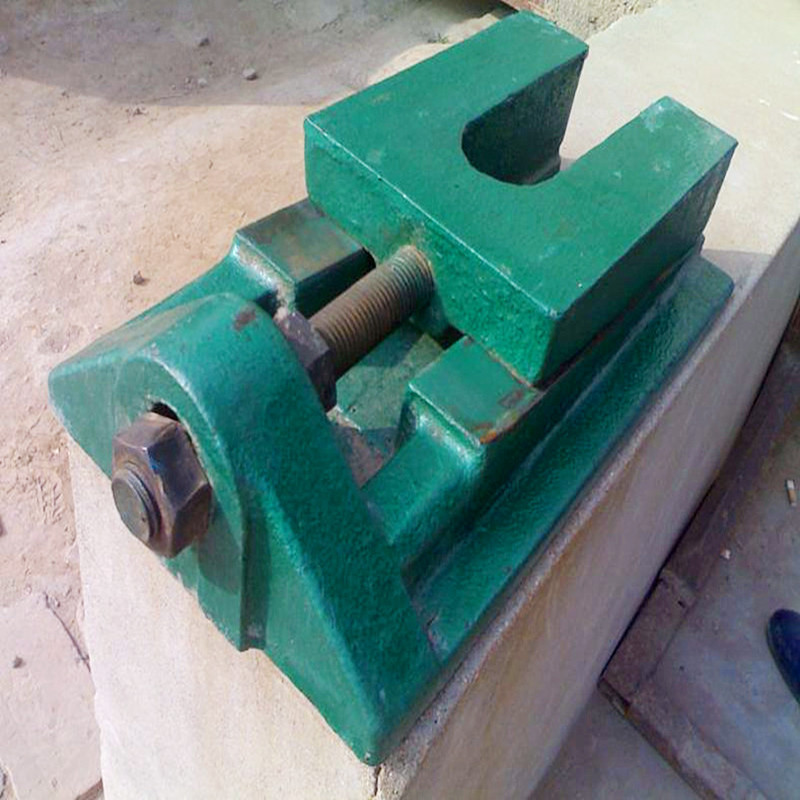
Precision-engineered metal components awaiting integration into damping pads.
Industry Trends and Technological Advancements in Vibration Damping
The industrial sector is continually evolving, driven by demands for increased efficiency, precision, and sustainability. These evolving requirements significantly influence the development of `anti vibration pads` technology. Modern trends are shifting towards smart, adaptive, and highly durable damping solutions.
Key Trends Shaping the Future of Damping Solutions:
- Smart Damping Systems: Integration of sensors and IoT capabilities into `vibration damping pads for heavy machinery` allows for real-time monitoring of vibration levels, temperature, and load distribution. This data enables predictive maintenance, dynamic adjustments, and optimized operational parameters, moving beyond passive damping to active and semi-active control.
- Advanced Materials Research: The quest for superior damping performance at extreme temperatures, pressures, and chemical exposures is leading to the development of novel elastomeric composites, viscoelastic polymers, and hybrid material structures. These materials offer enhanced longevity and performance tailored to specific, challenging industrial environments.
- Sustainable Solutions: Growing environmental consciousness drives the demand for `anti vibration rubber pads for heavy machinery` made from recyclable, bio-based, or non-toxic materials. Manufacturers are also focusing on optimizing production processes to reduce waste and energy consumption.
- Miniaturization and High-Performance Density: As machinery becomes more compact, there's a need for damping solutions that offer high load capacity and excellent damping characteristics within smaller footprints. This trend is particularly relevant for applications like `ac anti vibration pads` where space is often limited.
- Customization and Modular Design: Standardized solutions are giving way to highly customized, modular damping systems that can be easily configured for diverse machinery types and operational requirements, allowing for greater flexibility and cost-effectiveness.
These trends underscore a commitment to not only mitigate vibration but to enhance overall machinery intelligence, operational efficiency, and environmental responsibility, solidifying the role of advanced damping technologies in industrial infrastructure.
Technical Specifications and Performance Parameters of Pad Iron
Understanding the precise technical specifications and performance parameters of pad iron is crucial for engineers and procurement specialists to select the optimal solution for specific industrial applications. These parameters directly influence the effectiveness, durability, and safety of the installed machinery.
Key Performance Indicators:
- Load Capacity (Static & Dynamic): The maximum weight the pad can support without permanent deformation, and its ability to manage fluctuating loads during operation. Measured in kN or lbs.
- Damping Coefficient: A measure of how effectively the pad dissipates vibrational energy. Higher values indicate better damping performance.
- Natural Frequency: The frequency at which the system naturally oscillates without external forces. Ideally, the pad's natural frequency should be significantly lower than the operating frequency of the machine to avoid resonance.
- Shore Hardness: Measures the material's resistance to indentation, typically for the elastomeric component. Dictates stiffness and load-bearing characteristics.
- Operating Temperature Range: The temperature spectrum within which the pad maintains its specified performance without degradation.
- Chemical & Oil Resistance: Critical for applications in petrochemical, chemical processing, and manufacturing where exposure to corrosive substances or lubricants is common.
- Corrosion Resistance: Specifically for the metal components, indicating resistance to rust and degradation in humid or chemically aggressive environments.
- Dimensional Accuracy: Precision in manufacturing ensures correct fitment and uniform load distribution, vital for large, complex machinery.
Typical Product Specification Table:
| Parameter | Unit | Standard Value Range | Notes |
|---|---|---|---|
| Elastomer Material | - | Nitrile, EPDM, Neoprene | Selected based on application environment |
| Metal Base Material | - | ASTM A36, A514 Steel | High strength and rigidity |
| Static Load Capacity | kN | 50 - 500 (per pad) | Depends on size and material |
| Dynamic Damping Coefficient | - | 0.15 - 0.35 | Higher is better for vibration absorption |
| Operating Temperature | °C | -30 to +120 | Material dependent |
| Shore Hardness (Elastomer) | Durometer A | 60-90 | Affects stiffness and compliance |
| Corrosion Resistance | - | ASTM B117 Salt Spray (1000+ hrs) | For coated metal parts |
| Service Life Expectancy | Years | 10-20 | Under normal operating conditions |
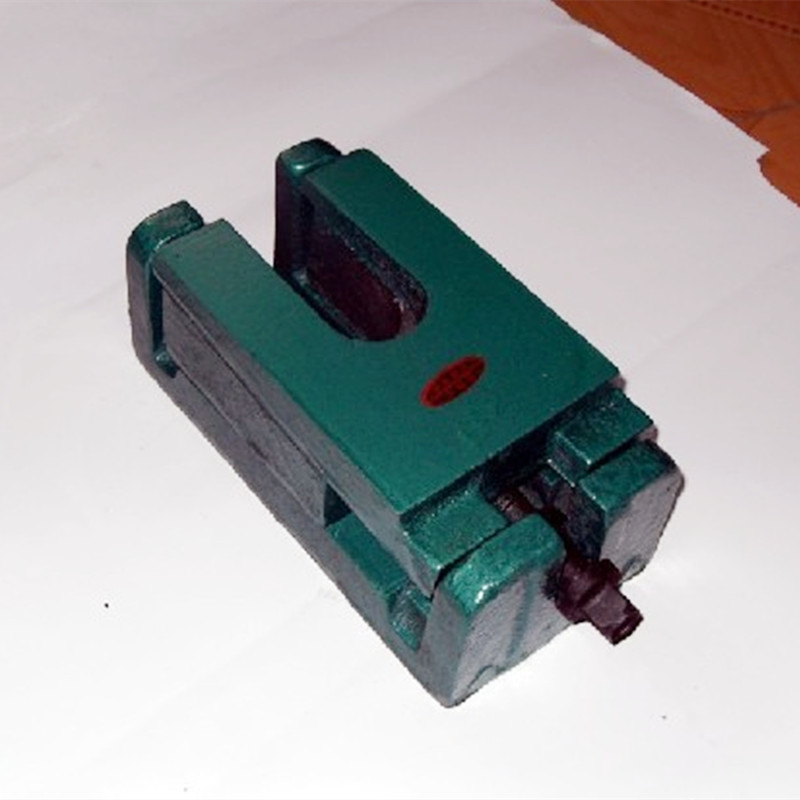
Diagram illustrating typical load distribution on an industrial damping pad.
Versatile Application Scenarios for Pad Iron
The robust design and superior damping characteristics of pad iron make it indispensable across a multitude of industrial sectors. Its primary function is to isolate machinery from its foundation, thereby preventing the transmission of harmful vibrations, reducing noise, and protecting both the equipment and the surrounding infrastructure.
Key Application Areas:
- Heavy Industrial Machinery: Crucial for large presses, forging hammers, plastic injection molding machines, and metalworking equipment. Here, `vibration damping pads for heavy machinery` significantly reduce shock loads, minimizing structural fatigue and improving operational stability.
- Pumps and Compressors: Used extensively in water treatment plants, oil & gas facilities, and chemical processing. `Anti vibration rubber pads for heavy machinery` prevent vibrations from causing pipework fatigue, seal leaks, and premature bearing wear, leading to extended service intervals and reduced maintenance costs.
- Generators and Turbines: Essential for power generation facilities and backup power systems. These pads ensure stable operation, reduce noise emissions, and protect sensitive electronic controls from vibration-induced malfunctions.
- HVAC Systems: In commercial buildings and industrial complexes, `ac anti vibration pads` are critical for isolating chillers, air handlers, and cooling towers. This prevents noise and vibration transmission through the building structure, ensuring comfort and prolonging equipment life.
- Precision Manufacturing Equipment: For CNC machines, optical inspection systems, and sensitive laboratory equipment, precision is paramount. `Anti vibration pads` ensure the stability required for microscopic accuracy, preventing vibration-induced defects in products.
- Conveyor Systems and Material Handling: In mining, logistics, and bulk material processing, these pads support heavy conveyor belts and vibrating feeders, reducing structural stress on the supports and enhancing worker safety.
In each scenario, the judicious selection and installation of pad iron translate directly into tangible operational benefits, including reduced energy consumption, improved product quality, enhanced safety, and substantial cost savings over the equipment's lifespan.
Technical Advantages and Value Proposition
The deployment of high-quality pad iron offers a compelling suite of technical advantages that directly contribute to significant operational and financial benefits for industrial enterprises. These advantages extend beyond mere vibration isolation to impact the entire lifecycle cost and performance of machinery.
Core Technical Advantages:
- Extended Equipment Lifespan: By mitigating shock loads and continuous vibrational stress, pad iron significantly reduces wear and tear on bearings, seals, structural components, and electrical systems. This leads to a substantial increase in the mean time between failures (MTBF) and overall equipment longevity.
- Reduced Maintenance Costs: Less wear and tear translates directly into fewer breakdowns, fewer replacement parts, and reduced labor costs associated with unscheduled maintenance. Proactive vibration management moves operations from reactive repairs to planned, predictive maintenance.
- Improved Operational Efficiency and Precision: Stable machinery operates more smoothly and consistently. For precision manufacturing, this means higher quality output, reduced scrap rates, and adherence to tighter tolerances. In energy-intensive operations, reduced vibration often correlates with improved energy transfer and reduced wasted energy.
- Enhanced Workplace Safety: Excessive vibration can cause structural damage to facilities, lead to operator fatigue, and contribute to occupational health hazards (e.g., hand-arm vibration syndrome, noise-induced hearing loss). Effective damping creates a safer, more compliant working environment.
- Noise Reduction: A significant byproduct of vibration damping is the reduction of audible noise. This is critical in urban areas, for indoor facilities, and for meeting stringent occupational noise regulations, contributing to better working conditions.
- Corrosion and Chemical Resistance: With specialized coatings and elastomer materials, modern damping pads are engineered to resist aggressive chemicals, oils, and harsh environmental factors, making them ideal for petrochemical, marine, and food processing industries.
- Simplified Installation and Relocation: Many designs of pad iron allow for easier installation and repositioning of machinery, reducing the need for elaborate grouting or specialized foundations. This offers flexibility in plant layout and expansion.
The cumulative impact of these advantages positions advanced damping solutions not merely as a component purchase but as a strategic investment that delivers a robust return on investment (ROI) through enhanced asset performance, reduced operational expenditure, and sustained compliance with industry standards. According to a study by the Vibration Institute, properly implemented vibration control can extend machine life by 20-30% and reduce maintenance costs by 15-25%.
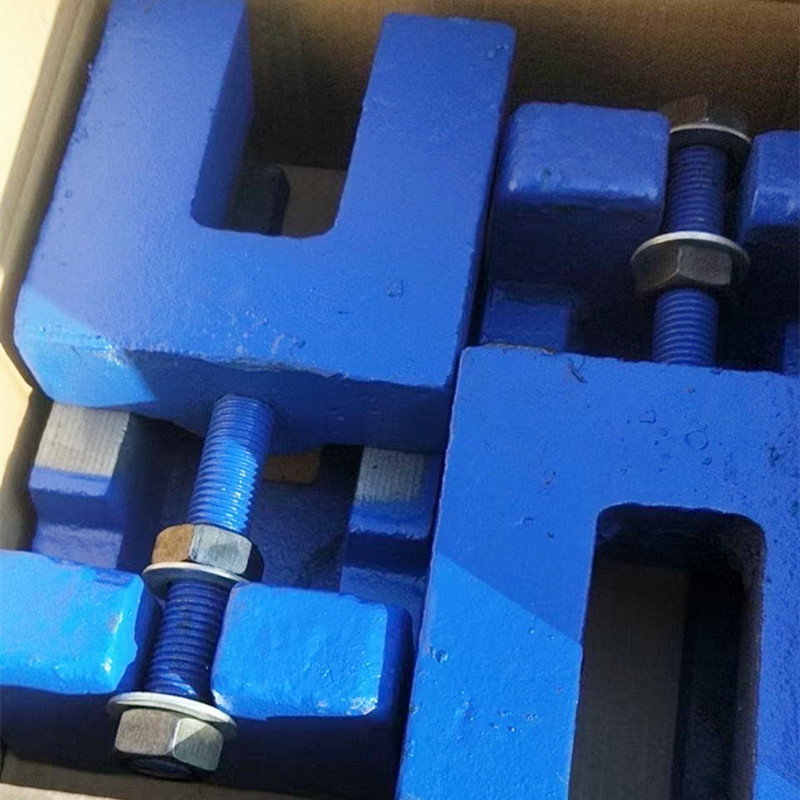
A heavy-duty industrial pump stabilized with advanced vibration damping solutions.
Vendor Comparison and Selection Criteria
Selecting the right supplier for industrial damping solutions is a critical decision that impacts long-term operational performance and cost-effectiveness. A thorough vendor comparison goes beyond initial price, focusing on quality, expertise, and support.
Key Criteria for Vendor Evaluation:
- Material Quality & Sourcing: Verify the origin and certification of raw materials (steel, elastomers). Reputable vendors use high-grade, traceable materials.
- Manufacturing Precision & QA: Assess the manufacturer's quality assurance protocols, adherence to ISO standards (e.g., ISO 9001), and testing capabilities (e.g., dynamic load testing, material analysis).
- Engineering Expertise & Customization: Can the vendor offer engineering support and custom solutions tailored to unique application requirements, or are they limited to off-the-shelf products?
- Certifications & Compliance: Ensure products meet relevant industry standards (e.g., ASTM, ANSI, CE) and environmental regulations.
- Track Record & Client References: Review case studies, testimonials, and inquire about their experience with similar projects or clients in your industry.
- After-Sales Support & Warranty: Evaluate the comprehensiveness of their warranty, technical support, and availability of replacement parts or service.
- Lead Time & Logistics: Assess their ability to meet delivery schedules and handle global logistics if required.
Comparative Overview of Damping Pad Types (Illustrative):
| Feature | Basic Rubber Pad | Spring Mount | Advanced Pad Iron |
|---|---|---|---|
| Load Capacity | Low-Medium | Medium-High | High-Very High |
| Damping Effectiveness | Fair | Good (frequency specific) | Excellent (broadband) |
| Chemical/Oil Resistance | Poor-Medium | N/A (metal) | Good-Excellent (material dependent) |
| Corrosion Resistance | Medium | Medium (requires coating) | Excellent (via protective coatings) |
| Temperature Range | Limited | Wide | Wide (optimized elastomers) |
| Lifespan | Short-Medium | Medium-Long | Long-Very Long |
| Cost (Relative) | Low | Medium-High | Medium-High (justified by performance) |
This comparison highlights the superior performance envelope offered by advanced pad iron solutions, particularly for demanding industrial environments where robust load capacity, effective broadband damping, and long-term reliability are paramount.
Customized Solutions for Unique Industrial Challenges
While standard pad iron products offer robust performance for many applications, industrial operations often present unique challenges that necessitate highly customized damping solutions. Leading manufacturers understand that a "one-size-fits-all" approach is insufficient for optimizing performance in extreme or specialized environments.
Tailored Engineering and Manufacturing:
- Specific Material Grades: Custom formulations of elastomers or specific metal alloys can be chosen to withstand extreme temperatures (cryogenic to high heat), aggressive chemicals, radiation exposure, or hygienic requirements (e.g., FDA-compliant materials for food processing).
- Bespoke Dimensions and Shapes: For non-standard machinery footprints or restricted installation spaces, custom dimensions, drilling patterns, and geometries can be engineered to ensure a perfect fit and optimal load distribution.
- Optimized Damping Characteristics: Through finite element analysis (FEA) and dynamic simulation, damping properties (stiffness, damping ratio, natural frequency) can be fine-tuned to precisely counteract the specific vibration modes of a particular machine, leading to superior isolation.
- Specialized Surface Coatings: Beyond standard anti-corrosion treatments, bespoke coatings can be applied for enhanced abrasion resistance, electrical insulation, or specific aesthetic requirements, extending the pad's operational life in unique settings.
- Integrated Sensor Technology: For smart factory environments, damping pads can be designed with integrated sensors for real-time vibration monitoring, load sensing, and temperature tracking, feeding data into predictive maintenance systems.
- Prototyping and Testing: Custom solutions often undergo iterative prototyping and rigorous testing against specified performance criteria, ensuring that the bespoke pad performs as intended before full-scale production.
The ability to provide highly customized damping solutions underlines a vendor's deep engineering expertise and commitment to solving complex industrial challenges. This collaborative approach ensures that the pad iron installed is not just a component, but an integral part of an optimized, high-performance system.
Application Case Studies: Real-World Impact
These case studies illustrate the tangible benefits achieved through the strategic deployment of high-performance damping solutions, showcasing the versatility and effectiveness of advanced `anti vibration pads` in demanding industrial environments.
Case Study 1: Petrochemical Plant - Reciprocating Compressor Vibration
Challenge: A major petrochemical facility experienced severe structural vibrations from a large reciprocating compressor, leading to frequent maintenance on adjacent pipework, sensor malfunctions, and a high noise level in the control room. Existing isolation methods were proving inadequate.
Solution: Engineers designed and installed specialized `vibration damping pads for heavy machinery` (a customized pad iron system) beneath the compressor. These pads featured a high-strength steel base with a custom-formulated Nitrile rubber composite, optimized for the compressor's specific operating frequency and the harsh chemical environment.
Results: Within three months, pipework fatigue failures decreased by 70%. Noise levels in the control room dropped by 12 dB, improving working conditions. The operational stability of the compressor increased, leading to a projected 15% reduction in annual maintenance costs and a significant increase in equipment uptime. The solution was certified to ISO 13094 standards for vibration and shock isolation of machinery.
Case Study 2: Automotive Stamping Plant - High-Tonnage Press
Challenge: An automotive OEM faced issues with its 2000-ton stamping press, where impact vibrations were affecting the precision of adjacent robotic welding cells. This led to quality control issues and slower production cycles as sensitive equipment had to be paused during press operation.
Solution: A robust `anti vibration rubber pads for heavy machinery` system was implemented, incorporating high-load capacity pad iron designed to absorb the enormous transient forces generated by the press. The pads utilized a multi-layer elastomeric core with exceptional impact absorption properties.
Results: The vibration transmitted to the surrounding floor structure was reduced by over 85%. This allowed the robotic welding cells to operate concurrently with the stamping press, eliminating downtime for vibration-related pauses. Product defect rates linked to welding accuracy dropped by 8%, and overall production throughput increased by 10%, translating into significant annual savings and faster time-to-market for vehicle components.
Case Study 3: Data Center - HVAC Chiller Units
Challenge: A new high-density data center experienced noise complaints from adjacent office spaces due to vibrations transmitted from large rooftop HVAC chiller units. The vibrations also posed a risk to the longevity of the chiller units and the roof structure itself.
Solution: `Ac anti vibration pads` specifically engineered for large chiller loads and outdoor weather conditions were installed beneath each unit. These pads featured marine-grade corrosion resistance and an EPDM elastomer for UV and ozone resilience.
Results: Noise complaints ceased entirely, with vibration levels in adjacent areas reduced by 90%. The structural integrity of the rooftop was preserved, and the lifespan of the chiller units was projected to increase, reducing long-term capital expenditure on HVAC infrastructure. The installation allowed the data center to operate without disrupting critical business functions in neighboring areas.
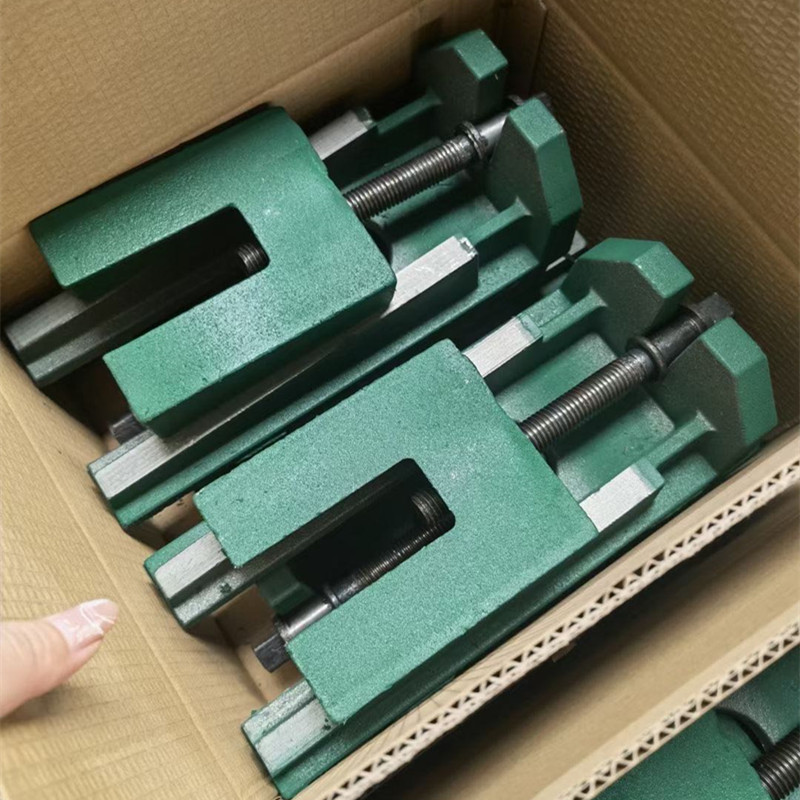
Industrial machinery foundations with integrated damping solutions.
Trust, Support, and Long-Term Partnership
Building long-term partnerships in the B2B sector is predicated on trust, reliability, and robust support infrastructure. A credible supplier of industrial damping solutions offers more than just products; they provide assurance and comprehensive service.
Certifications and Industry Authority:
Our commitment to quality is underscored by adherence to stringent international standards. Our manufacturing facilities are ISO 9001:2015 certified, ensuring consistent quality management processes. Products comply with relevant ASTM and ANSI standards for material properties and performance. Furthermore, our collaboration with leading engineering firms and our 20+ years of experience in the field of industrial vibration control establish us as an authoritative source for advanced damping solutions.
Frequently Asked Questions (FAQ):
A1: Selection depends on several factors, including the machine's static and dynamic load, operating frequency, the environment (temperature, chemicals, oil exposure), and desired vibration isolation efficiency. Our engineering team can assist with precise calculations and recommendations.
Q2: What is the typical service life of your damping pads?A2: Under normal operating conditions and proper installation, our high-quality pad iron products are designed for a service life of 10 to 20 years, often exceeding that in less demanding applications. This is backed by rigorous material testing and field performance data.
Q3: Can these pads be used in corrosive or extreme temperature environments?A3: Yes, we offer specialized pad iron variants with enhanced corrosion-resistant coatings (e.g., hot-dip galvanized, epoxy-coated) and elastomers formulated for extreme temperatures (e.g., silicone for high heat, specific compounds for cryogenic applications). Please consult our technical team for specific requirements.
Q4: What is the lead time for custom damping solutions?A4: Lead times for custom solutions vary based on complexity, material sourcing, and production queue. Typically, after design approval, prototyping takes 4-6 weeks, and full production batches range from 8-16 weeks. We work closely with clients to meet project timelines.
Lead Time and Fulfillment:
We maintain a robust supply chain and optimized production schedules to ensure timely delivery. Standard pad iron products typically have a lead time of 2-4 weeks, while custom orders are quoted individually, factoring in design, prototyping, and manufacturing complexities. Our logistics team ensures efficient global shipping and on-time fulfillment.
Warranty Commitments:
All our industrial damping products are backed by a comprehensive warranty against manufacturing defects and material failures under specified operating conditions. Standard warranties typically range from 2 to 5 years, with extended warranty options available for specific product lines or projects. Full warranty details are provided with each quotation.
Customer Support:
Our dedicated customer support team is available to assist with technical inquiries, order status, installation guidance, and troubleshooting. We provide expert engineering consultation to help you specify the right solution and offer ongoing support throughout the product's lifecycle. Reach us via phone, email, or through our online portal for prompt assistance.
References
- Vibration Institute. (2023). "The Impact of Vibration Control on Machine Lifespan and Maintenance Costs." Vibration Technology Journal, Vol. 38, No. 2, pp. 45-52.
- ISO 9001:2015 - Quality management systems — Requirements. International Organization for Standardization.
- ASTM International. (2022). Standards for Rubber and Plastics, Rubber Products, and Manufacturing Procedures. ASTM D2240, ASTM D412.
- Harris, C. M., & Piersol, A. G. (2002). Harris' Shock and Vibration Handbook (5th ed.). McGraw-Hill.
- National Institute for Occupational Safety and Health (NIOSH). (2021). Occupational Noise Exposure. Centers for Disease Control and Prevention.
-
Thread Plug Gauge Our Promise of Measurement ExcellenceNewsAug.22,2025
-
Gauge Pin Class Reflecting Quality LegacyNewsAug.22,2025
-
Check Valve Types for High Rise BuildingsNewsAug.22,2025
-
Water Control Valve for Irrigation SystemsNewsAug.22,2025
-
Gate Valve with Soft Seal TechnologyNewsAug.22,2025
-
Y Type Strainer for Oil and Gas ApplicationsNewsAug.22,2025
Related PRODUCTS


